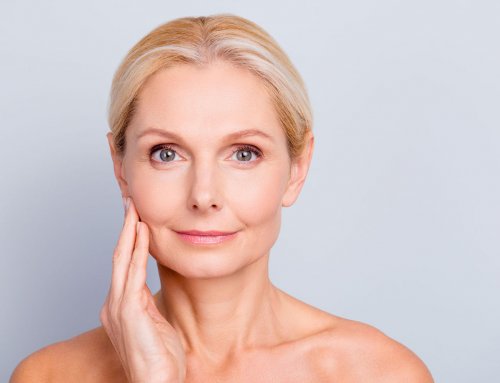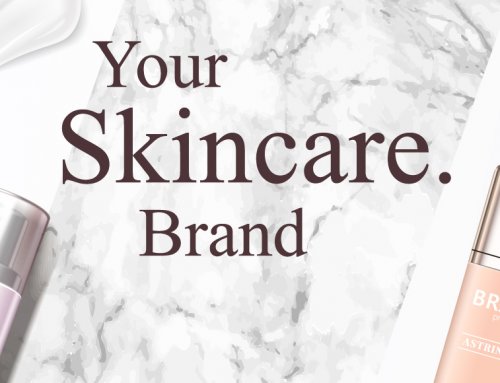By now most aesthetic professionals are very familiar with hyaluronic acid (HA) as an ingredient in skincare products. Within the last several years hyaluronic acid has also become a popular buzz word with shoppers even if they have a difficult time pronouncing Hi-la-ron-ic Acid.
Consumers may not know what HA is exactly but they definitely want it in their products. As the demand for hyaluronic acid grows for both the professional and non-professional markets its good to gain a deeper understanding of this popular ingredient and why it’s so desirable.
Most skin care users don’t realize there are actually several different sizes of hyaluronic acid molecules and a wide array of ingredients that seek to mimic the benefits of HA. There often are misconceptions surrounding the function of hyaluronic acid, how it performs and why it is consider beneficial for virtually all skin types.
In this short article I will discuss the attributes of hyaluronic acid so you are better prepared the next time you are looking for products which contain HA or asked about this ingredient by your customers.
Hyaluronic acid is a humectant that attracts and retains water. It is a type of polysaccharide called a, glycosaminoglycan, which is found naturally in human tissues such as: skin; connective tissue; synovial fluid in our joints and in our eye balls. It serves many functions including hydrating our skin and hair, lubricating to reduce friction in our joints and behaving like a shock absorber to stabilize joints and tissues. It is produced mainly by both fibroblasts and keratinocytes.
One of its main functions, where skincare is concerned, is to hold the water in the intercellular matrix of the connective tissue. This water-binding capacity (hygroscopic) contributes significantly to the elasticity of the skin. Hyaluronic acid effectively regulates and distributes water maintaining elasticity by acting as a natural reservoir. Hyaluronic acid is also involved in the process of tissue repair
Any discussion of HA would not be complete without the mention of its molecule size. While the HA found in human skin is of a medium molecular weight, when it comes to products sold in the professional skincare market it can be found in a range of sizes.
HA is measured in Daltons (kDa), which measures atomic mass, one Dalton is equal to 1/12th the mass of carbon-12. From as low as 50 kDa to 1500 kDa, there are generally five size ranges and their respective weight is directly connected to their function and benefits.
In very general terms the larger the molecule the less it penetrates the skin. High weight HA (1000-1500+ kDa) is excellent for moisturizing and providing a protective film against trans epidermal water loss. Medium weight 600-1000 kDa helps to increase skin smoothness to the touch, it also hydrates and protects from dehydration by creating a non-occlusive film at the surface of the epidermis. When we move into the low and ultra-low weight HA 50 – 300 kDa you will experience deeper benefits as the HA has an easier time passing into the skin. This enhances the skin conditioning benefit and the deep dermis hygroscopic properties.

You may have heard of the 500 Dalton Rule and why it’s relevant to HA. The rule says that only molecules that are less than 500 Daltons in weight are able to penetrate healthy skin. As a result of the Dalton Rule professionals are using a variety of tools and devices such as rollers, needling, dermaplaning, derma pen etc., to help enhance penetration of larger molecule HA into the skin.
There is no doubt that Hyaluronic acid is very effective at preventing trans epidermal water loss (TEWL). It is ideally suited to slow the rate at which water evaporates from the surface of the skin by collecting and holding on to it. This provides many positive benefits such as smoother looking skin, increased elasticity, a decrease in the severity of fine lines, enhanced barrier function and accelerated restoration of natural hydration levels.
Many clients ask me which size of HA is best? My personal preference is products that contain more than one size of HA as this type of product synergistically provides a wider range of benefits. For example, a blend of ultra-low and high weight HA can deliver two distinctive outcomes, maximum topical hydration and intensive deeper skin smoothing and wrinkle reduction. I also favor HA that elevate elasticity and smoothing of rough skin as most of my clients are looking for that type of result.
When it comes to recognizing Hyaluronic acid you may find it listed in a number of different ways on an ingredient label. Sodium Hyaluronate, Glycosaminoglycan (Hyaluronan), Hyaluronic Acid, Sodium Acetylated Hyaluronate, Hydrolyzed Hyaluronic Acid and Phyto (or plant derived) Hyaluronate. Some of these names indicate the source of the HA as it is produced in a number of ways. Traditionally the most common sources were from a chicken’s/rooster’s comb as it has a very high concentration of hyaluronic acid. In response to the growing demand for non-animal origin ingredients we are seeing an abundance of natural derived HA from bio-fermentation of yeast, glucose and inorganic salts.
Performance of the hyaluronic acid is remarkably similar from both animal and biotechnological sources, but from our observation the trend has definitely moved toward plant form as it supports a more holistic green lifestyle choice.
Performance of the hyaluronic acid is remarkably similar from both animal and biotechnological sources, but from our observation the trend has definitely moved toward plant form as it supports a more holistic green lifestyle choice.
There is little doubt that Hyaluronic acid is and will continue to be a desirable ingredient. Its ability to deliver water-based hydration makes it an ideal candidate for skincare products for most skin types. With so many possible applications and a wide range of benefits, Hyaluronic acid, is certainly one of our superstar ingredients!

Written by:
Aleks Vranicic, L.E.
VP Sales & Technical Training
Vitelle Labs






You must be logged in to post a comment.